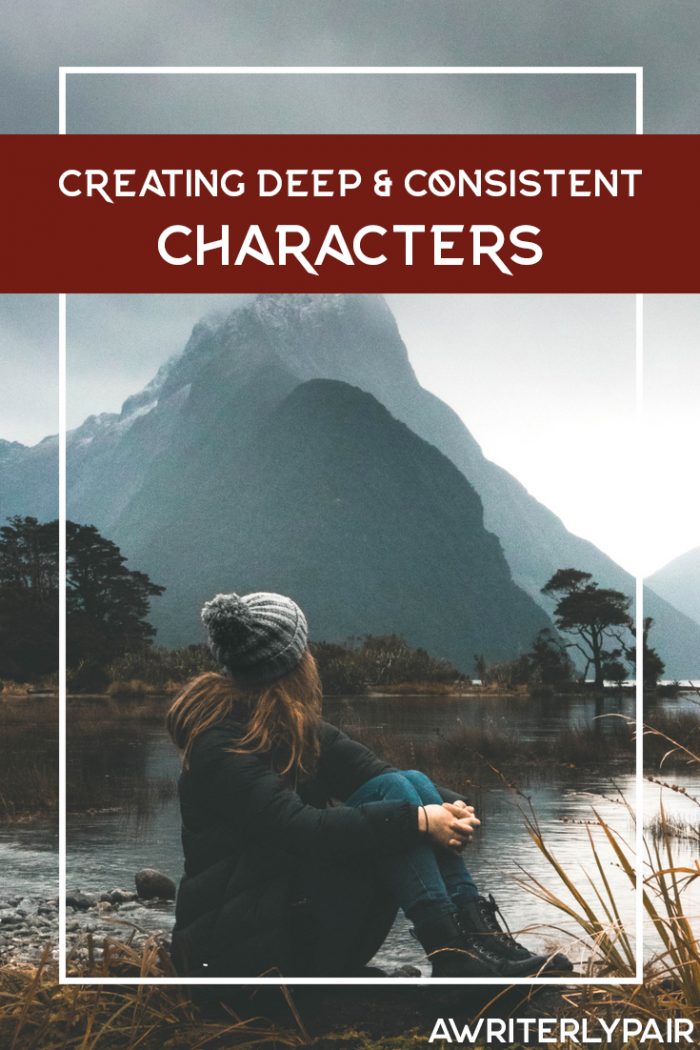Character Building
Even before world building and plot structure, character building is probably the most crucial element to creating a remarkable story.
Sure, readers want to get lost in the world you have so carefully and thoroughly crafted. Yes, pacing your plot just right will mean no one will be able to put it down, but your characters are the vessel that carry us through that story. Your characters are what make that world come alive. . .or what makes it fall short.
So, how do you create a character— or rather characters— that your readers will fall head over heels for? How do you create a person out of thin air that makes people want to cry when they cry, to laugh when they laugh, or to dread having to say goodbye on the final page?
First, you need some relatability. Readers need to be able to put themselves into the characters’ shoes and understand where their motivations come from, even if they do not agree with them. Here are a few things that will help your characters resonate with your audience:
- Flaws: People have ’em, so characters should too. Flaws don’t mean everyone needs to be awful, but your characters do need to blunder. They need to fail, and fail miserably. They need to mess up so bad that your reader groans audibly on the subway and people start to stare. T
- Quirks: Along those lines, give them quirks. Give them some endearing (or deterring) unique habits and peculiarities. Is he an impulsive liar? Does her knee bounce up and down like crazy when she’s nervous? Is she terrified of crustaceans (like, ahem, me 🙃)?
- Voice: Have you ever read a text from a friend and “read it in their voice?” This is because we all have such distinct voices. Our word choice reflects our thoughts, an accent tells us where they call home, where they grew up.
- Desires: What motivates your character? Why did they get out of bed this morning? Why should we be cheering her on?
- Secrets/ A Past: You don’t have to spell it all out for us. Please, for the love of Zeus, do not give us any of your characters entire life story! Tease us, hint at it, make us wonder and speculate, but don’t give us more than we need to know to understand the plot.
- A Moral Compass: No, this doesn’t mean everyone has a conscience, or wants to “do the right thing.” What I mean is, give your characters values. These beliefs are what justify their actions— good or bad. Give them conviction, and then challenge that conviction! Make them doubt themselves, but try not to make them change their mind with every shift in the wind. Let them stand firm in their beliefs, and then rock the foundation, but don’t let them completely crumble unless absolutely necessary. And sometimes it is. That’s up to you 😃
Our Favorite Resource for Character Building:
Before I dive into this, let me be clear on something. We LOATHE the concept of the “cookie cutter molds.” People are simply not designed to be forced into labels. There isn’t some special formula that categorizes and compartmentalizes our behaviors and personalities.
That would be a world without agency. And if this *world is anything, it is a world that absolutely and indiscriminately allows each person the privilege of choice.
*EDIT: The world’s societies and peoples, are a different story
*Steps off soap box*
K, so when Matti and I create our characters, we sit down and take the Myers Briggs Personality Test on their behalf. I won’t go too far into what the test is exactly, or how it works, but if you’re unfamiliar with it and want to know more, then read this awesome article by K.M. Weiland. (I highly recommend spending some time on her site. She has TONS of valuable advice and resources on writing a novel.)

To be brief, the MBTI will help you create the framework for each of your characters, keeping them consistent and “in character.” It can also inspire some really great conflict between varying personalities found in your story and help you create better chemistry.
And, as I said before, this doesn’t mean you cannot deviate a little from what the MBTI says. We don’t all fit into a single, perfect box. We are all unique, but we certainly do have enough in common with each other to “fit in” to certain categories.
Our main character Arkin, for example, is an ESTP. But with his lack of freedom (and somewhat traumatic experiences before and during the opening chapters), he has lost his sense of adventure— a fundamental element for an ESTP, but his inner spirit is not one to go down without a fight, so you will see him being challenged in that regard considerably throughout the saga.
What’s your MBTI type? Do you feel it is pretty spot on with who you are? How do you structure your characters? Bless us with a peek into your mind in the comments below!
-Shy






I love this! I’ve never thought to use MBTI testing for my own creations. What an awesome structuring idea for character building!!!
I thought it was such a novel idea when I decided to do it. . .but once I started researching his “type,” I realized it was actually quite a common practice. 💁♀
I think I will have to give this a try. I’m struggling with the a few of my characters and them not feeling as well rounded as I would like. It’s making it difficult to write scenes with them at all. I know the characters are necessary to what i’m trying to say but I just can’t figure out a way to make them feel as real as i want them to be.
I’m familiar with the Myers Briggs test as we use it at work with new hires going through training to help both them and their trainer get an idea of who they are and how they may learn best. I’ve never thought to try and use it with my writing. Thanks for the tip.